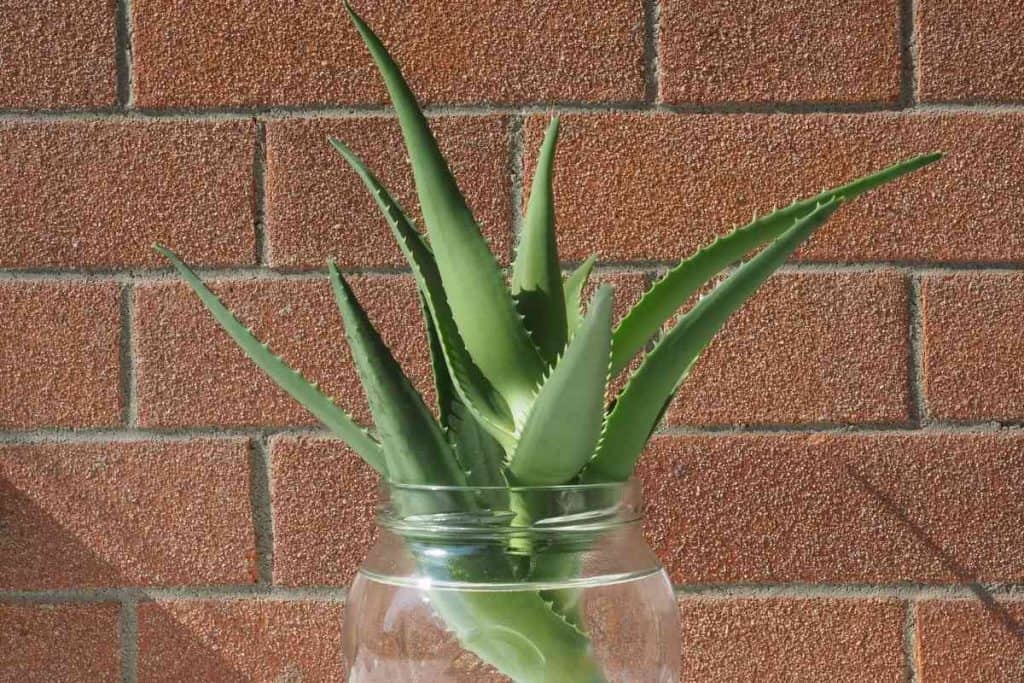Like several other Aloe species, the Aloe Vera contains many herbal and cosmetic properties. It’s a very important plant usually found in most home gardens due to its numerous uses.
Sadly, cutting aloe vera plants can be tricky, and if you’re not careful, you may damage it during the process, which is why knowing how to cut Aloe Vera Plant without killing it is paramount.
First, you require a sharp knife to cut off the mature leaves to free up the emergence of new and healthy growth.
Also, prune out the discolored, dead, and dry leaves to give the plant a healthy look. We’d be looking at the various steps required to cut an Aloe Vera without killing it.
Table of Contents
How To Cut Aloe Vera Plant Without Killing It

While cutting an Aloe Vera plant for propagation or production of gel, you want to ensure you do it safely or risk killing or stunting its development.
To avoid the latter, you begin its cutting by using a sharp, sterile knife, as it will avoid potential injuries on the juicy or any disease threat.
Below are the steps of cutting Aloe Vera without killing it.
Step 1: Cutting Off Mature Leaves
Just like several other juicy plants, it takes the Aloe Vera plant a little while to grow. Therefore, its cutting or trimming should only be done when the plant leaves have gotten to a mature stage.
It is not difficult for the plant to be identified when the leaves have matured because, at this stage, they possess bigger and more weighty leaves than others.
Also, you will see some of them bending outwards, thereby stopping the younger leaves from growing upright. Immediately you’ve identified the leaves; then, it’s time to plan how you intend to make your cuttings.
We repeat for more emphasis; make sure you use either a sharp, sterile knife or a pair of serrated scissors to cut the area of the leaf near the stem.
But, gently apply alcohol on the blade of the cutting tool you are using, as it acts as a sterilizer and will stop the cut area from a potential bacteria attack or any other dangerous disease that is a threat to its healthy growth.
On the other hand, please avoid using blunt or rusty cutting equipment, as it will lead to unequal trimming, thus affecting the plant’s re-growth process.
Related Post: When to Cut Asparagus Ferns
Step 2: Cutting the Dead, Discolored or Dried Leaves
Whenever there’s a strange-looking leaf discolored, has texture, and has a density in any Aloe Vera, that means it is damaged.
Damaged or infectious leaves possess brown-yellow leaves and other signs like bad odor, flexible and brittle texture, and a saggy appearance that worsens with time.
The signs mentioned above will probably occur when the Aloe Vera plant is excessively watered, underwatered, or even affected by diseases or pests.
It’s very important to note that dead or damaged leaves also possess sap capable of oozing out whenever you cut them.
Therefore, endeavor to cut them gently with sharp scissors to avoid causing potential damages to the healthy ones. You can liken it to getting rid of a bad apple from a basket and leaving the healthy ones.
Step 3: Pruning the Healthiest Leaves
After separating the condemned leaves, trim the healthy ones that dwell on the outer edges of the bunch. You can proceed to the biggest and more mature leaves, as you can easily make gel from them without endangering the lives of your Aloe Vera plants.
Anytime you prune the healthiest leaves, endeavor to keep the hand pruner closer to the plant’s stem. If your hands are always shivering or vibrating, then you might find this trimming stage a little difficult or burdensome.
If you find out that the leaves are particularly thicker than others, you can try utilizing a piece of more vigorous ratchet hand pruner.
By so doing, you can now trim the additional strands that appear on the edge of the leaf. After this action, you can now extract your trimmed leaves.
Step 4: Gel Away the Healthy Cut Leaves
It is quite easy to gel the Aloe Vera plant for topical reasons. You need to get yourself a pair of gloves (for finger protection from sharp edges), a bowl, and a leaf.
It would be best to press the leaf with both hands from the top to the bottom where the cut area is located. Do it as often as possible to get the most out of the leaf. Then, you are good to go.
Frequently Asked Questions
Do You Need to Trim Aloe Vera Plants?
Well! Trimming in Aloe Vera Plant is necessary, as it will help keep them healthy and look their best. If you want to harvest the gel within the leaves, trimming is certainly required.
You have to prune any leaf edge or the entire leaf, which has changed from its normal color to pinkish-brown. That is the sign that that part is dying; hence, getting rid of it will help to keep the plant healthy and green.
Does Aloe Vera Plant Grow Back After Cutting It?
No, the cut leaves won’t grow back, but the Aloe Vera plant will keep developing new baby leaves that will replace the ones cut. As long as you cut the leaves less often, the plant will die.
What Do You Do After You Cut an Aloe Vera Plant Leaf?
We recommend you remove Aloin from the leaves entirely. After cutting a leaf from an Aloe Vera plant, make sure you keep the harvested Aloe Vera leaf on a container or raised surface to allow the Aloin to drip out into a plate under it.
Wait for about one hour before allowing the Aloin to drip out, proceed to wash them under cool, running water.
Related Post: How To Save a Dying Aloe Vera Plant




